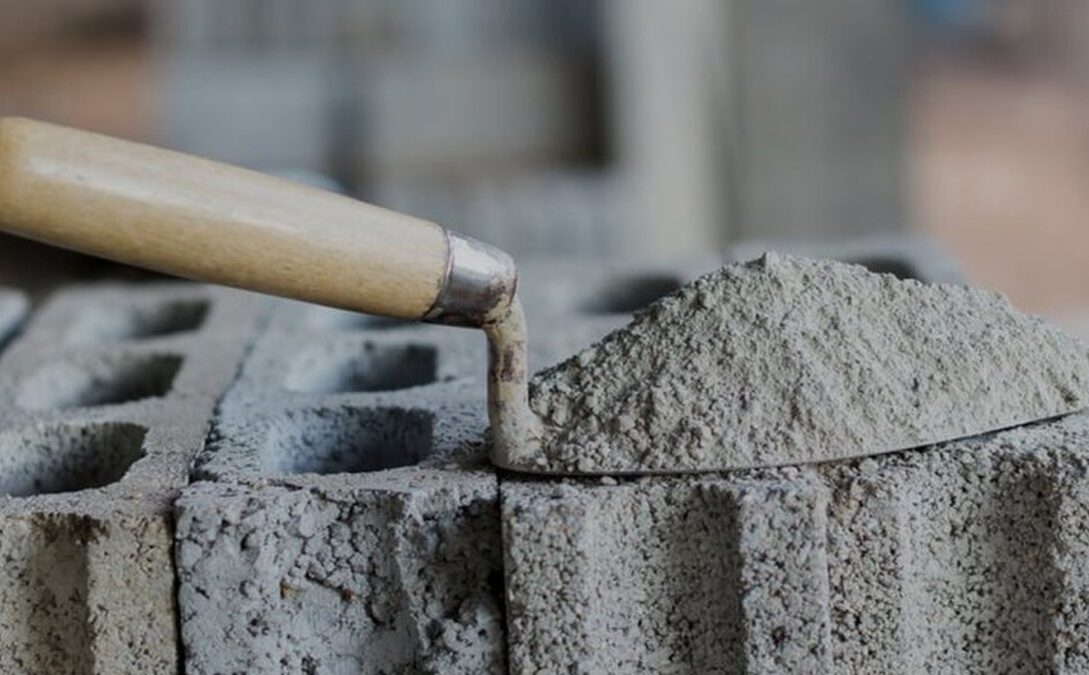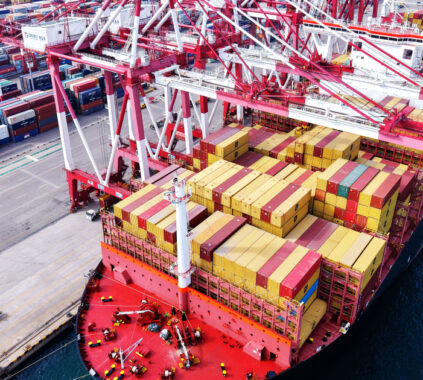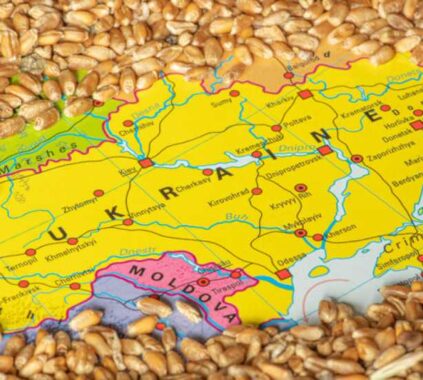An analysis of the Ukrainian cement industry was conducted by the Experts Club information and analytical center with the assistance of the Ukrainian Cement Manufacturers Association (Ukrcement).
Over the past five years, the Ukrainian cement industry has experienced a peak in production in 2021, a sharp decline in 2022, a gradual recovery in 2023, and stabilization in 2024. However, the current level is still far from pre-war indicators.
According to trade union and industry reviews, output was around 11 million tons in 2021, fell to 5.4 million tons in 2022, recovered to 7.43 million tons in 2023, and reached 7.93 million tons in 2024. In 2025, manufacturers are talking about an actual “ceiling” of approximately 8 million tons given the current risks and logistics, which is likely to be the maximum figure.
The dynamics of domestic cement consumption show a similar trend of “decline and normalization.” In 2021, before the full-scale invasion, consumption was around ~10.6 million tons. In 2022, the cement market fell sharply to approximately ~4.5 million tons, rose to ~6.2 million tons in 2023, and stabilized at around ~6.3 million tons in 2024. Thus, the country approached a stable level of “war” demand, which is almost half of the pre-war level, within the range of 6–6.5 million tons.
The structure of demand has changed: the share of traditional residential and commercial construction has given way to infrastructure and defense projects. The key short-term drivers are fortification works, shelters, emergency repairs of roads and bridges, as well as targeted housing programs such as “єОселя” (Home), which supported demand in 2023–2024, although they did not return it to the 2021 level. For 2025, the market expects “stable” demand, sensitive to the volume of budget and international financing.
Amid declining domestic demand, a natural step in maintaining production capacity utilization was to gradually reorient part of the cement volume to foreign markets. In 2021, cement exports amounted to about 971,000 tons (9% of production), and in 2024, about 1.7 million tons (21.3% of production). The main destinations remain neighboring countries — Poland, Romania, Hungary, and Moldova, as confirmed by both statistical data and industry estimates. The industry has repeatedly emphasized that as soon as domestic consumption begins to grow, the export share will decline in favor of Ukrainian construction sites.
Imports, on the contrary, have shrunk. After approximately 1 million tons in pre-crisis 2020, deliveries in 2024 decreased to ~40 thousand tons (including niche items such as white cement). This was also influenced by anti-dumping duties: against Turkey — 33–51% (currently in effect until September 2026), and against Russia/Belarus/Moldova, measures have been extended until 2030. Under current conditions, when production capacities and logistics are adapted to “wartime” consumption levels, demand is fully covered by domestic resources.
The market structure in 2024–2025 is highly concentrated. The key producers are PJSC Ivano-Frankivskcement, the CRH group (after the AMCU approved the agreement to acquire CRH’s Dyckerhoff/Buzzi assets – PJSC VIPCEM, JSC Podilsky Cement, PrJSC Mykolaivcement, LLC Cement) and PrJSC Kryvyi Rih Cement. Despite market discussions, legal disputes, and attention from antitrust authorities, which are to be expected for transactions of this scale, the CRH deal creates potential for integration into global production and logistics chains, attracting new investments, modernizing production, and raising the standards of the competitive environment. In the context of the country’s future large-scale reconstruction, the agreement opens up opportunities to strengthen the stability of supplies, improve product quality, and develop a competitive environment.
Who is currently driving domestic consumption? In peacetime, the main stabilizers of demand were mass housing construction and infrastructure. In 2023–2025, basic demand will be driven by roads and engineering structures (including fortifications and shelters), municipal and energy facilities, spot restoration projects, as well as the private sector — repairs and local construction.
Road construction is an important factor in economic and social development. The introduction of the latest technologies, the use of high-quality materials, and compliance with environmental requirements are key aspects of the successful development of this industry.
The development of construction and repair of cement-concrete roads based on cement mixtures can play a key role in stimulating stable cement consumption in conditions of war and recovery. This infrastructure direction allows maintaining the production capacity of enterprises, jobs, and economic activity, despite a significant reduction in residential and commercial construction. Due to their durability and endurance, cement concrete pavements are the optimal solution for both military and civilian logistics. The implementation of such projects not only ensures the stability of industry demand, but also the development of related sectors, creating a multiplier effect for the economy even in crisis conditions. This issue will be the focus of a specialized seminar organized by NIRI and the Ukrcement Association on October 15-16, 2025, where the advantages and role of cement concrete solutions in the reconstruction of Ukraine will be discussed (details at ukrcement.com.ua).
In terms of sales channels, the market remains predominantly B2B: the bulk of cement is purchased by contractors, road and infrastructure companies, large developers, reinforced concrete manufacturers, and concrete plants. The B2C channel (retail building materials chains, small contractors) continues to play a significant role in repairs and low-rise construction, but in terms of total volume, it is inferior to the project segment. Industry reviews of construction projects and reports on fortification works in 2024–2025 provide indirect confirmation of the “infrastructure” shift.
The geography of foreign sales shows a stable “corridor” and proximity to the EU. According to trade statistics for 2023, Romania accounted for the largest value of deliveries, followed by Poland and Hungary; in 2024, Romania, Poland, and Hungary remained in the lead
This reflects shortages in EU border markets and the competitiveness of Ukrainian prices due to close logistics.
What limits growth. Military risks and energy infrastructure (in particular, the availability of electricity), regional logistics, as well as regulatory and competitive issues. A large-scale jump in consumption (approximately 12–13 million tons) requires a steady inflow of investment resources for reconstruction in the amount of about $35 billion per year — the association considers such a scenario to be technically and operationally realistic. Predictable competition rules and price monitoring are important in this equation so that the “reconstruction” multiplier is not absorbed by costs.
Conclusion by Experts Club. The industry has found a “war balance”: production of about 8 million tons, domestic consumption of ~6.3 million tons, and exports as insurance at the level of 1.5–1.7 million tons. With the scaling up of energy recovery and strengthening programs, a logical shift from exports to the domestic market is expected. The key to acceleration is stable financing of infrastructure and housing, affordable energy, and maintaining fair competition between major players. In this scenario, cement remains one of the first materials to quickly transform the budget into employment and GDP — through concrete, reinforced concrete structures, roads, and fortifications.
Sources: Global Cement (production and consumption; import duties), Interfax-Ukraine/Ukrcement (exports in 2024; estimates of reconstruction needs), OEC (export destinations 2023), CEMBUREAU (imports, exports, and consumption, including a benchmark for 2024), industry and business media on the CRH/Dyckerhoff deal and the competitive situation.
cement Experts Club research Ukrcement
Last modified: September 30, 2025













 Аналітичні дослідження у сфері макроекономіки, політології, футурології з використанням передових науково-технічних досягнень та методів. Створення відеоконтенту, надалі – документального контенту. Проведення конференцій, консалтинг, розвиток дискусійних майданчиків.
Аналітичні дослідження у сфері макроекономіки, політології, футурології з використанням передових науково-технічних досягнень та методів. Створення відеоконтенту, надалі – документального контенту. Проведення конференцій, консалтинг, розвиток дискусійних майданчиків.